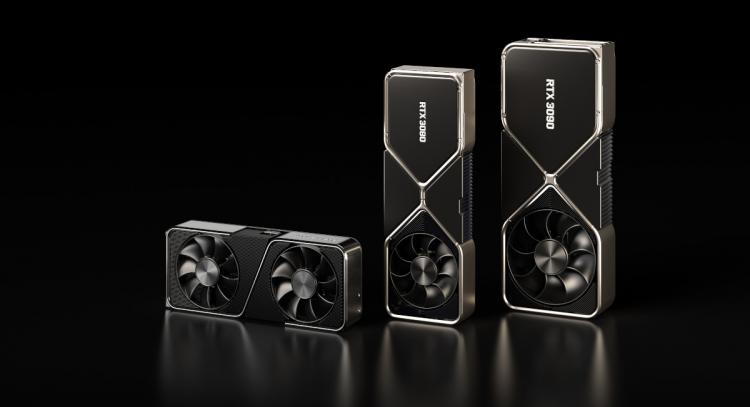NVIDIA's GeForce RTX 3000-series launched this September in the form of the RTX 3080 and 3090, two beastly Ampere-based graphics cards that set a new standard for both rasterised and ray-traced performance. The RTX 3070 - a $500 gaming card almost certain to set the market ablaze - hits shelves next week. And that was the extent of their plans for the 30-series for the time being... at least officially.
For weeks rumours of RTX 30-series cards with doubled-up VRAM complements have persisted, specifically a 20GB RTX 3080 and 16GB RTX 3070. They would apparently be equipped with similar GPU silicon to their 10GB and 8GB counterparts (perhaps with tweaked clock speeds and GPU Boost power profiles), but essentially offer an alternative for content creators or extreme resolution gamers not content with the smaller frame buffer. They would also mean that said content creators needn't raid their coffers to stretch to an RTX 3090, which itself arrives with 24GB GDDR6X VRAM.
According to reports by both Videocardz.com and Techpowerup today both the RTX 3080 20GB and RTX 3070 16GB have been cancelled internally, with NVIDIA directing AIBs to not dabble in this particular card configuration. The RTX 3070 Ti - a mid-point SKU between the RTX 3070 and 3080 - had also already been axed, and the removal of these two models keeps the range exceptionally streamlined for the time being.

The GALAX RTX 30-series Roadmap was one of the strongest indications of the planned 30-series variants
It's believed these higher capacity SKUs were being lined up to combat AMD's 'Big Navi' Radeon 6000-series, which will supposedly be equipped with 16GB GDDR6 at the highest tiers. NVIDIA's 'educated guesswork' on competitor performance is typically eerily accurate, so it's possible that they felt such a direct counter-punch would no longer be necessary.
Videocardz speculate that low GDDR6X yields may have impacted their plans for the RTX 3080 20GB, potentially pushing cost beyond market feasibility. That wouldn't have affected the RTX 3070 16GB however, a card that would utilise GDDR6 VRAM.
In this instance the obvious answer might be the most likely: demand for their existing SKUs are already so high that adding more is counter-productive. NVIDIA and AIBs are already struggling to keep up with demand (though that may be eased if AMD Radeon is competitive), so why over complicate matters? Higher capacity models can always be held in reserve for a later date, including the inevitable mid-stream refresh common to NVIDIA's product generations.
The GeForce RTX 3070 8GB launches on October 29th. AMD's 'Big Navi' Radeon 6000-series presentation is scheduled for October 28th. Next week will be fascinating indeed.
SOURCE: VideoCardz.com







